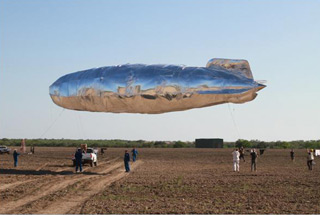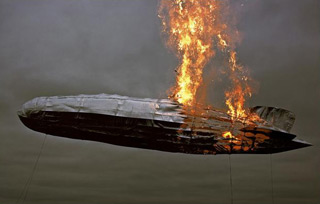 Approaching Lakehurst, N.J., the flight crew may have had an inkling of the disaster about to unfold.
Approaching Lakehurst, N.J., the flight crew may have had an inkling of the disaster about to unfold.
The Hindenburg, the largest aircraft ever made, was tail heavy and resisted repeated attempts to trim it level—a sign pointing to a leak from one or more of the hydrogen-filled ballonets inside the rigid frame. Six members of the airship’s crew of 61 were ordered forward as the Hindenburg made its final approach. As the newsreel cameras rolled and a crowd watched in horror, the massive airship—804 feet long—burst into flames that consumed the stricken ship in 34 seconds. Thirteen of the 36 passengers, 22 members of the crew, and one member of the ground crew lost their lives. The age of the airship was over.
What sparked the fire—and even what fueled it—have been debated since. Official inquiries concluded a static discharge provided the spark and hydrogen gas the fuel (hydrogen gas is flammable only when combined with oxygen). However, alternative theories persist: sabotage, a bullet fired from the ground, and flammable coating of the airship’s skin among them.
 A scale reproduction of the Hindenburg burns as engineers test a theory on what destroyed the airship. Discovery Channel photo.
A scale reproduction of the Hindenburg burns as engineers test a theory on what destroyed the airship. Discovery Channel photo.
On Dec. 16 at 9 p.m. (Eastern and Pacific), Discovery Channel’s Curiosity series will take a fresh look at the disaster, for the first time attempting to re-create it at scale. Drawing on historical records including photographic evidence and survivor accounts, engineers worked to narrow down the possibilities to the most likely scenarios, and then test them in the field, constructing 1/10-scale reproductions of the airship to be blown up or burned.
“Testing on this scale has never been attempted,” said Steve Wolf, a ballistics engineer and one of the lead investigators.
Discovery Channel is billing “What Destroyed the Hindenburg” as the first effort to provide a “satisfactory” explanation for the disaster.

